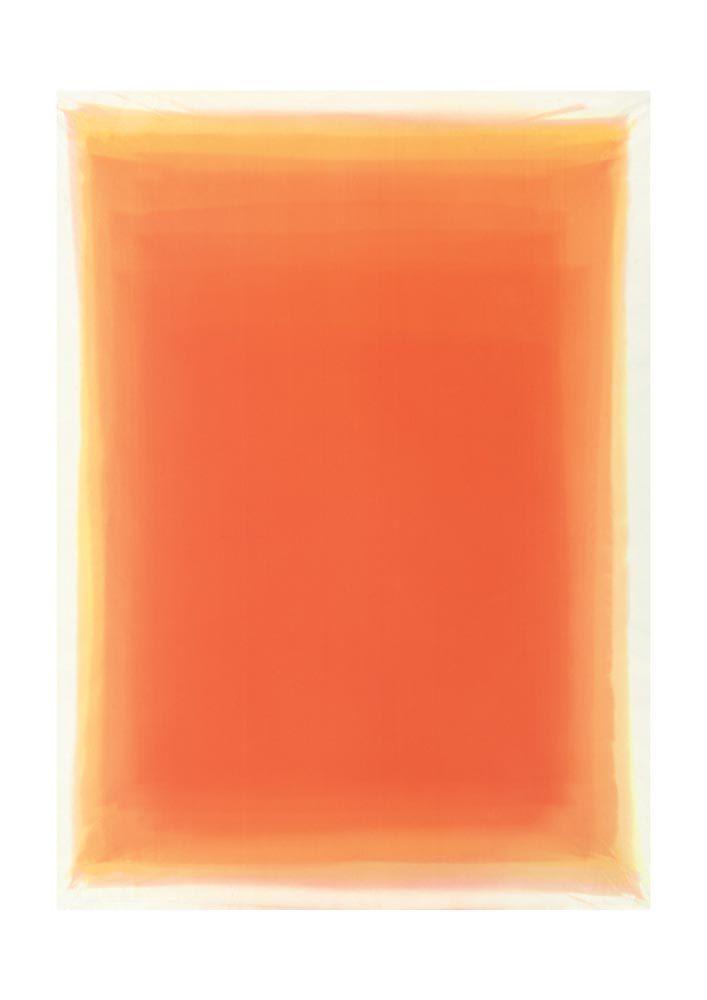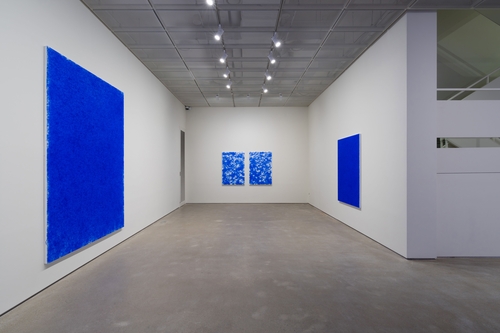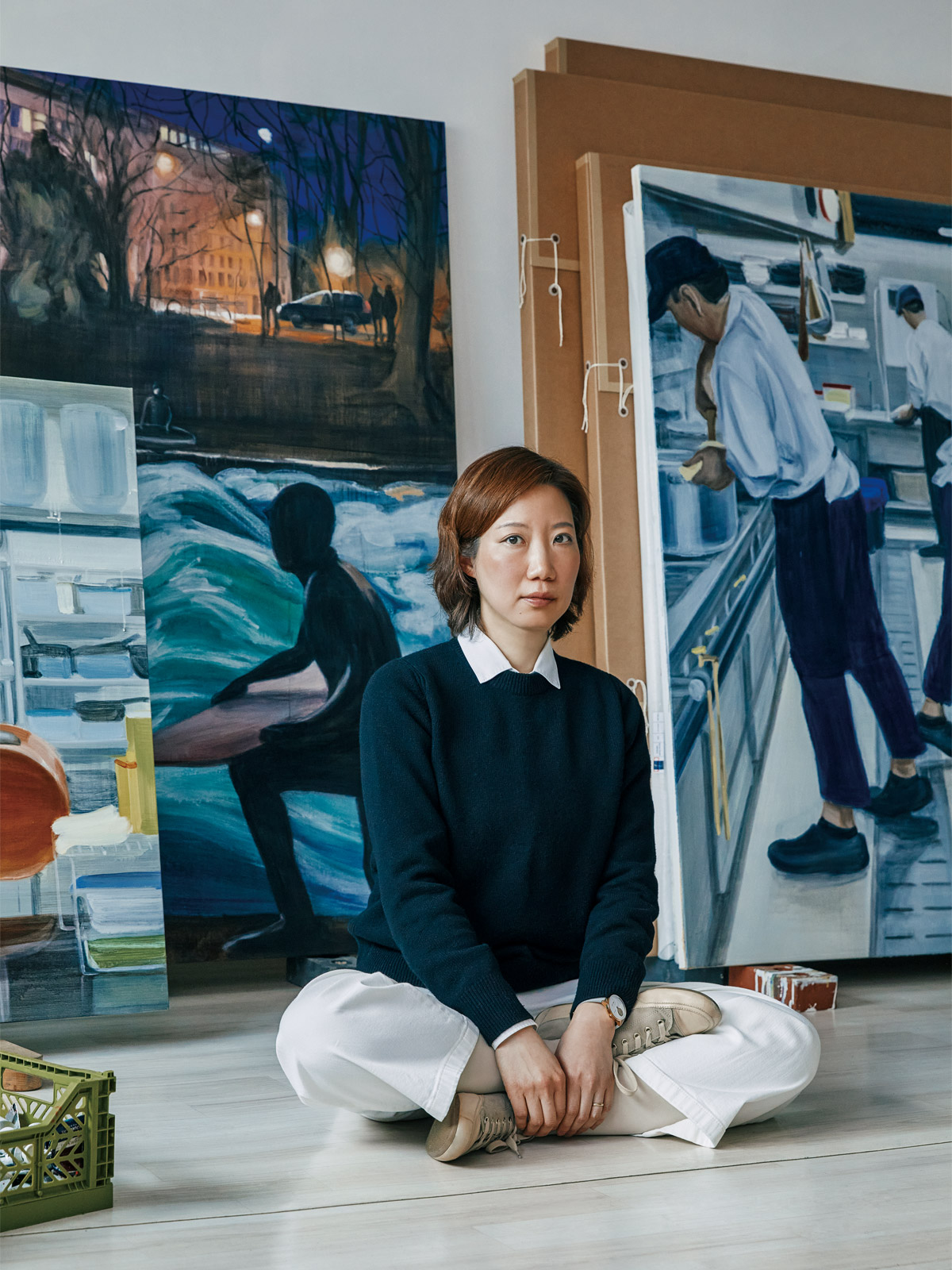Kim Taek-Sang (b. 1958), a leading Korean Post-Dansaekhwa painter, captures the beauty of nature on canvas. As a child growing up in Wonju, Gangwon Province, the artist was greatly influenced by the colors of nature. Observing the beauty hidden in the colors of nature, Kim's constant search for the essence of water to express its brilliance has led to his current work.

Kim Taek-Sang, Untitled, 2004 ©K Auction
Fascinated by the color of the crater
in Yellowstone National Park in the United States, which he saw in a
documentary one day, he tried to capture it on canvas, but realized that he
could not do it in the way he had been painting, so he began to study water for
a long time. After understanding the color of water and the process by which it
is created, he abandoned all previous techniques and built his own artistic
world to express the color of water as closely as possible.
The 'Water' series, which was
presented in his first solo exhibition in 1994, was mostly blue-colored. In
response, the artist recalled that it was a time when he could not escape the
stereotype of the 'concept' and 'language' of water as blue. This prompted him
to further immerse himself in the study of water, and he came to understand
that the color of water has multiple colors depending on its composition and
environment, and built his own method.

Kim Taek-Sang, Hue of Time, 2004 ©MMCA
Kim's ‘Water’ works are not painted by
the artist's brushstrokes but by directing the water to paint itself. The
artist creates a concave canvas frame with a slope and pours water diluted with
acrylic so that the canvas is submerged. The artist then controls the amount of
surface that is submerged and the time it takes to settle, then allows it to
dry. He repeats this process, building up layers to capture light and color.
This process involves many natural
elements such as light, wind, time of day, air, and seasons in the studio. For
example, “gravity” is needed to bring down the colors, and “wind” and
“sunlight” to dry the canvas. In order to achieve the effect of uncontrolled
light through these natural interventions, the artist minimizes his own
intervention. In his 2004 work, Hue of Time, the traces of time and the
movement of water, which seeped and smeared like ink on the canvas, remain in
the canvas.

Kim Taek-Sang, Breathing of mellow orange, 2009 ©Gaain Gallery
Through this repetitive process, the
thin layers are built up, and the finished painting seems to breathe with a
living, breathing light. Kim’s Breathing Light series embodies living
light and color, like its title.
The artist finds beauty in the
movement of light as it changes over time, like the inhalation and exhalation
of life. And the artist saw the resonance of life as manifesting in color. Kim's
work is about taking a lifeless object, the canvas, and imbuing it with a life
force that is actually 'alive' like the colors of natural life.
 Kim Taek-Sang, Breathing light- In between light purple, 2013 ©Gaain Gallery
Kim Taek-Sang, Breathing light- In between light purple, 2013 ©Gaain GalleryThis in-depth consideration of the
fundamental principles and properties of color and light leads the artist to
constantly explore color choices and the physical nature of paint materials
themselves. The first thing he considers when choosing colors, he says, is that
they should be colors that his body can respond to and be moved by. For
example, he says that when he uses purple, he feels most at ease and calm.
In fact, although Kim's paintings are
called ‘Dansaekhwa’, he rarely works entirely in one color. The process of precipitating
different colors is repeated, and the final result is a single color. However,
the paints of different colors could not be able to mix, and the result is not
a Dansaekhwa, but a
painting with layers of different colors. In other words, it is not a painting
realized by the artist's perfect control, but a painting that opens up various
possibilities led by the processes of nature and resonates with them.
 Kim Taek-Sang, Resonance-23-1, 2023 ©Lehmann Maupin
Kim Taek-Sang, Resonance-23-1, 2023 ©Lehmann MaupinIn 2023, the artist presented a new
work, Resonance, as part of the two-person exhibition “Reflections and
Refractions” with American artist Helen Pashgian at Lehmann Maupin Seoul. The Resonance
series is an extension of the artist's process of capturing the vitality of
light with the participation of natural elements, as in his previous works, but
it is characterized by a freer use of color than before.
For the Resonance series, the
artist explains that inspired by the ‘beating effect,’ in which two sounds of
different vibrations interfere with each other, spreading the sound further by
repeating their intensity, he adds color in layers, leaving 'in-between' in
time.
Kim Taek-sang's paintings do not
assert the presence of the artist. Instead, the artist and natural elements
such as water, gravity, and wind meet within the frame of the canvas, forming
an organic collaboration and resonance, resulting in a history of time.
“It's a way for water to reveal itself, and I'm just the conductor. It's like the role of a farmer who takes care of growing crops with water, time, gravity, and wind.”

Artist Kim Taek-Sang ©Lehmann Maupin
Kim Taek-Sang received his BFA from the Department of Painting at Chung-Ang University and his MFA from the Department of Western Painting at Hongik University. He has held several solo exhibitions at various institutions including Leeahn Gallery, Seoul, Daegu; Taguchi Fine Art, Tokyo; and Lehmann Maupin, Palm Beach, and has participated in group exhibitions at international institutions including Lehmann Maupin Seoul, Daegu Art Museum, and Esther Schipper Berlin and Seoul. His works are in the collections of the National Museum of Modern and Contemporary Art, Korea (MMCA), Kumho Museum of Art, Leeum, Samsung Museum of Art, and Suwon IPARK Museum of Art. He retired as a professor at Cheongju University in 2020 and now spends his time immersing himself in his work as an artist.



















